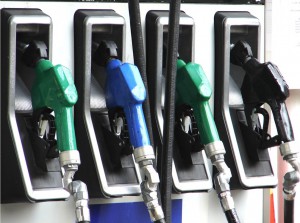
Holiday drivers have reason to celebrate this Independence Day: the lowest average gas prices since February.
Despite a surge in demand for gasoline as the summer driving season picks up momentum, the national average price for gasoline is nearing an all-time low for the year at $2.26 per gallon, according to AAA.
AAA reported that the last time the national average was this low was February. In addition, the website Gas Buddy estimated that this is the first time in 17 years that the price of gasoline on July 4th is likely to be less than the price on Jan. 1 of the same year.
Right now, AAA forecasts 37.5 million American will drive to their holiday destination, which may boost gas prices slightly.
The price of gas has fallen for 25 consecutive days and the national average is three cents cheaper than a week ago and 11 cents cheaper than a month ago. Heading into Independence Day weekend, gasoline is four cents less than a year ago.
(Georgia driver gets extraterrestrial help with speeding ticket. Click Here for the story.)
Record refinery rates, high gasoline and crude inventory and robust, but still smaller-than-expected demand this year are among the factors contributing to the downward price trend. Consumers can find gas for $2.24 or less at 60% of gas stations in the country, AAA noted.
Meanwhile, price per barrel of West Texas Intermediate crude oil opened at just above $43 this week as price of crude has dropped to its lowest level in 10 months.
Last week’s report from the Energy Information Administration showed that demand for crude oil remains buoyant as gross inputs at U.S. refineries have topped 17 million barrels per day in each of the past nine weeks. However, crude oil inventories remain high and above last year’s level.
(Click Here for details about why despite falling sales numbers, new car prices are higher than ever.)
Moreover, when looking at five-year crude oil storage trends, the surplus is even more eye-opening: roughly 82 million more barrels are in storage now than five years ago. Last week, Baker Hughes Inc. reported that the U.S. oil rig count grew by 11 last week, landing at 758 rigs – a three year high.
The data points toward an increasing supply of crude oil, which has contributed to prices dropping at the pump for drivers, and has helped to push the price per barrel down.
In addition, the EIA noted that U.S. refinery capacity has increased by 659,000 barrels per day since mid-August 2015, which is the equivalent of building a new refinery in the U.S. Additionally, EIA highlighted that recorded weekly refinery gasoline output rates have hit their 24 highest points since the summer of 2015.
(To see why Americans are likely to set new driving records this holiday, Click Here.)
The growing trend means that refineries are producing a record amount of gasoline that has easily met increasing demand from drivers and has left gasoline stockpiles at high levels.
